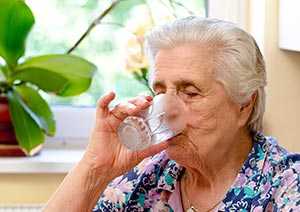Safe Water for Community Health (Safe WATCH)

CDC helps health departments reduce harmful exposures from private drinking water sources.
CDC supports drinking water programs at health departments to address problems with wells and other private drinking water sources in their communities. CDC encourages health departments to strengthen and improve their programs by
- Identifying gaps in their current program using the Environmental Public Health Performance Standards.
- Taking actions to address identified gaps and reduce exposures to contaminants.
Strong public health programs can help homeowners with wells or other private water sources find potential problems and take steps to address them. Based on identified gaps, drinking water programs can help
- Increase awareness among homeowners with private water sources with recommendations about
- How and when to test their water.
- How to interpret test results and what contaminants were found in their water.
- Links to services, products to use, and where to find additional information.
- Develop tailored interventions based upon contaminants found in the well.
Private Water & Public Health Quick Stats
- About 1 in 9 American residents get their drinking water from a private well.[1-3]
- About 1 in 5 sampled private wells were found to be contaminated at levels considered unsafe.[4]
- Over the past 45 years, the proportion of outbreaks associated with private water sources has increased.[5]
- Fifty six percent of local health departments regulate, inspect, or license private drinking water sources in their community.[6]
References
[1] National Groundwater Association (NGWA). 2016. Groundwater use in the United States of America. Westerville OH: NGWA.
[2] U.S. Census Bureau. “Population estimates July 1, 2014.” QuickFacts United States.
[3] Calculated by dividing the number of American residents served by a private well (NGWA) by the 2013 US population (U.S. Census).
[4] DeSimone LA, Hamilton PA, Gilliom RJ. Quality of ground water from private domestic wells. [PDF - 263 KB] United States Geologic Survey. Well Water Journal. 2009.
[5] Craun GF, Brunkard JM, Yoder JS, Roberts VA, Carpenter J, Wade T, et al. (2010). Causes of outbreaks associated with drinking water in the United States from 1971 to 2006. Clin Microbiol Rev. 2010;507-28.
[6] National Association of County and City Health Officials (NACCHO). 2014. 2013 national profile of local health departments. [PDF - 1.9 MB] Washington DC: NACCHO.
- Page last reviewed: April 25, 2016
- Page last updated: April 25, 2016
- Content source:


 ShareCompartir
ShareCompartir